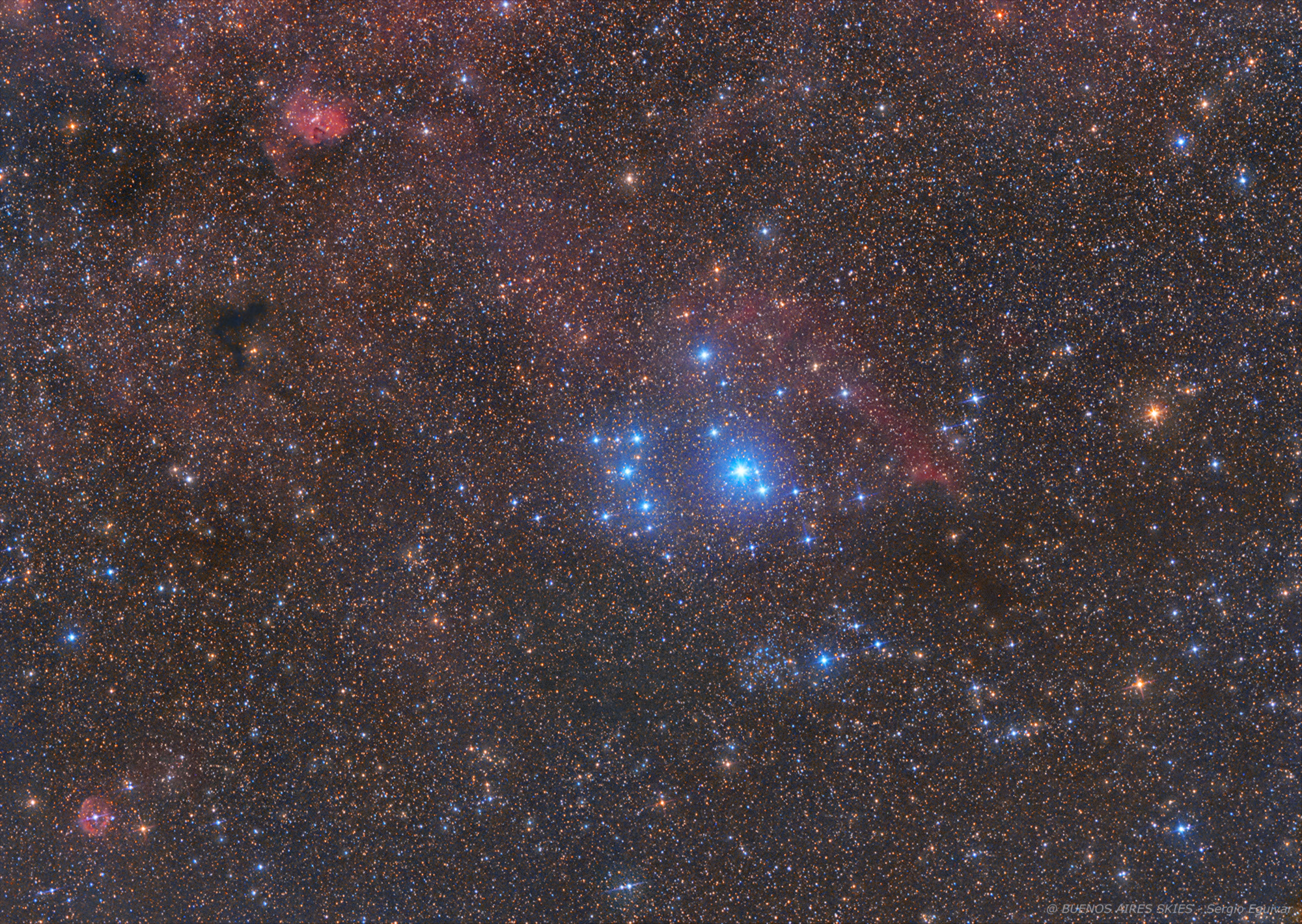
| HOME |
IC 2602 AKA THE SOUTHERN PLEIADES
OPEN CLUSTER IN CARINA (THE KEEL)
(Image centered at: ra 10 h:42 m / dec - 64º 23')

ANNOTATED IMAGE 75% RESOLUTION
April 2025, Home Backyard in Martinez, Buenos Aires, Argentina
DATA
TYPE: Open Culster
APPARENT DIAMETER: FOV approximately 6 x 4 degrees
APPARENT MAGNITUDE (V): 1,9
DISTANCE: 486 light years
IMAGE INFORMATION
INSTRUMENT: CANON EF 200 mm f2,8 L lens stoped at 4,5
CAMERA: QSI 583 WS
MOUNT: Synta EQ3 with GOTO kit with QHY 5 II guiding camera
FILTERS: BAADER LRGB Set, ASTRONOMIK Ha 7nm
SKY CONDITIONS: urban skies - Bortle 8
EXPOSURES: LHARGB (40,120,40,40,40)
OBJECT DESCRIPTION AND IMAGE SESSION
IC 2602 (also known as the Southern Pleiades, Theta Carinae Cluster, or Caldwell 102) is an open cluster in the constellation Carina. It was Discovered by French Astronomer Abbe Lacaille in 1751 from South Africa. This cluster is easily visible to the unaided eye and a beautiful target for binoculars. It is one of the nearest star clusters, located about 149 parsecs (486 light-years) away from Earth. IC 2602 is likely about the same age as the open cluster IC 2391, which has a lithium depletion boundary age of 50 million years old, though the age estimated from its Hertzsprung-Russell diagram is about 13.7 million years. Theta Carinae is the brightest star within the open cluster, with the apparent visual magnitude of +2.74. Theta Carinae is part of the asterism known as the Diamond Cross, which is often mistaken for the Southern Cross asterism in the constellation of Crux.
The image covers a filed of 24 square degrees and there are some interesting southern gems which are labelled in the image below
IC 2602 AKA THE SOUTHERN PLEIADES
ANNOTATED IMAGE